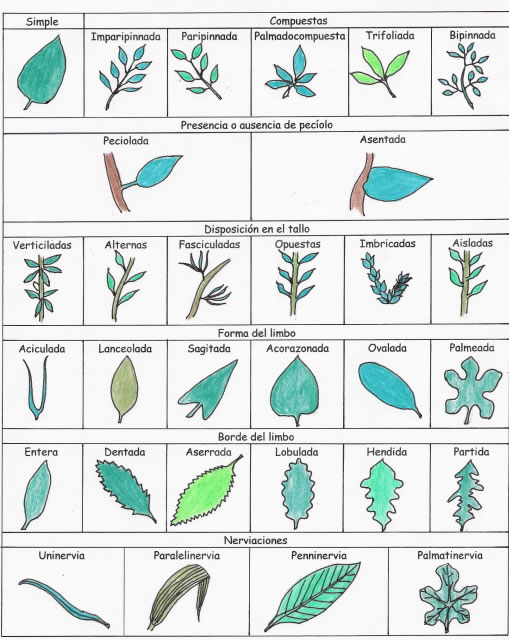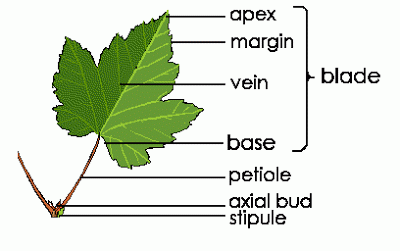sábado, 31 de enero de 2015
UNIT 4. WOOD
VOCABULARY
A
Ash:fresno
B
Birch: abedul
Beech: haya
Branch: rama
Bark: corteza
Broadleaf:hoja ancha
C
Chesnut: castaño
Cork: corcho
D
Deciduous tree: arbol de hoja caduca
E
Elm :olmo
Evergreen tree: hoja perenne
F
Fir:abeto
G
Growth rings: anillos de crecimiento
H
Heartwood: duramen (wood that has died)
Hardwood: Madera dura
L
Leaf: hoja
Leaves: hojas
N
Needle: acícula
O
Oak: roble
P
Pine: pino
Poplar: chopo
R
Roots raíces
S
Stem:tallo
Seed: semilla
Steel: acero
Sapwood: albura (living Wood)
Softwood: Madera blanda
Sap: savia
T
Timber: Madera de construcción
Tree: árbol
Trunk: tronco
W
Wood: madera
Wooden: de madera (A wooden chair)
Walnut: nogal
DEFINITION OF WOOD
Wood is a raw vegetal material. It comes from trunks of trees and branches. It is composed of:
- Cellulose fibres.
- Lignin
PROPERTIES OF WOOD
-Physical Properties:
- Hardness
- Density
- Electrical insulator
- Thermal insulator
- Porosity
-Ecological Properties:
- Renewable
- Biodegradable
- Recyclabe
-
HARDWOODS AND SOFTWOODS
Hardwoods and Softwoods
There are two main groups of timber producing trees used commercially: softwoods and hardwoods.
Softwoods
Softwoods are coniferous trees. They are 'evergreen'.
Their general characteristics are:Straight, slender.
The crown is narrow.It has needle like leaves.The fruit is a cone.
 Hardwoods
Hardwoods
Hardwood trees are broadleaf and generally deciduous.
The general characteristics are:wide, round crown.
The general characteristics are:wide, round crown.
The leaves are broad.Its fruit may be: nut, berries, chestnuts.

EXERCISE
CLICK ON http://visual.merriam-webster.com/plants-gardening/plants.php
COPY THE NAME OF THESE EXAMPLES AND TRANSLATE INTO SPANISH
COPY THE NAME OF THESE EXAMPLES AND TRANSLATE INTO SPANISH
WOOD- ACTIVITIES
COMPLETE THE FOLLOWING ACTIVITIES:
1. What are the two main substances that wood is composed of?
2. If we cut a tree, in the cross section we can see these different five parts. Write and draw them.
3. - The .................. are the lines in pieces of wood.
- A ...................... is the main part of the tree without branches after cutting it.
- The ...................... is the part that protects the tree from wind, rain, insects, etc.
- A ....................... is a small branch.
- The singular of leave is ..................
4. True or false?
- Wood is denser than water.
- Wood is a good thermal insulator.
- Wood is a good electric conductor.
- Wood is not a biodegradable material.
5. Write the seven steps to process wood (from cutting the tree to plane it).
6. Write three characteristics of hardwood and three of softwood.
7. Write four examples of hardwood and four of softwood.
8. What are the four types of prefabricated wood products?
1. What are the two main substances that wood is composed of?
2. If we cut a tree, in the cross section we can see these different five parts. Write and draw them.
3. - The .................. are the lines in pieces of wood.
- A ...................... is the main part of the tree without branches after cutting it.
- The ...................... is the part that protects the tree from wind, rain, insects, etc.
- A ....................... is a small branch.
- The singular of leave is ..................
4. True or false?
- Wood is denser than water.
- Wood is a good thermal insulator.
- Wood is a good electric conductor.
- Wood is not a biodegradable material.
5. Write the seven steps to process wood (from cutting the tree to plane it).
6. Write three characteristics of hardwood and three of softwood.
7. Write four examples of hardwood and four of softwood.
8. What are the four types of prefabricated wood products?
viernes, 30 de enero de 2015
jueves, 29 de enero de 2015
miércoles, 28 de enero de 2015
HOW TO PROCESS WOOD
The process starts with the extraction of the log (raw material) from the forest and ends with the production of planks.
STEPS
1. Cutting
2. Pruning
3. Transport
4. Removing the bark
5. Sawing
6. Drying
martes, 27 de enero de 2015
HARDWOOD Vs SOFTWOOD
HARDWOOD
|
SOFTWOOD
|
|
DEFINITION
|
Comes from deciduous trees that drop
their leaves every year.
|
Conifer trees have needles, normally do
not lose them. Evergreen
|
EXAMPLES
|
Examples of hardwood are teak, walnut, oak, ash, elm, poplar, birch,
maple etc.
|
Examples of softwood trees are pine,
spruce, cedar, fir, larch, etc.
|
COST
|
Hardwood is typically more expensive
than softwood.
|
Softwood is typically less expensive
compared to hardwood.
|
GROWTH
|
Hardwood has a slower growth rate.
|
Softwood has a faster rate of growth.
|
CHARACTERISTICS
|
Wide, round crown.
Leaves are broad. Its fruit may be: nut, chesnut and berries.
|
Straight, slender. The crown is narrow. The
leaf is a needle. The fruit is a cone
|
COLOR
|
Dark
|
Light
|
STRUCTURE
|
Non - resinous and close grained
|
Resinous
|
viernes, 16 de enero de 2015
JOINING PLASTICS
A. TEMPORARY JOINTS
- Nut and bolt
- Standard screw
- Double ended screw
B. PERMANENT JOINTS
- Adhesives
- Soldering
SHAPING AND FINISHING TECHNIQUES
We can use different tools and machines to finish the plastic objects that we have made.
Principal techniques are cutting, perforating, trimming and filling.
a. CUTTING
- Cutter
- Scissors
- Steel bit
- Coping saw
- Power saw (Jig saw)
- Power press
- Hot metal thread trimmer
b. PERFORATING
- Drill bit
c. TRIMMING AND FILLING
- File
- Rasp
FORMATION TECHNIQUES OF PLASTICS
1. EXTRUSION
2. LAMINATION
3. VACUUM FORMING Vacuum forming
4. MOLDING
- Injection Molding Injection molding
- Blow Molding Blow molding
- Compression Molding through compression
2. LAMINATION
3. VACUUM FORMING Vacuum forming
4. MOLDING
- Injection Molding Injection molding
- Blow Molding Blow molding
- Compression Molding through compression
jueves, 15 de enero de 2015
PLASTIC MATERIALS
Plastics
CLASSIFICATION OF PLASTICS
- THERMOPLASTICS
When we heat them, they become soft, which allows them to be formed into different shapes.
The heated and cooling process can be repeated many times.
- PVC
- PS
- PE
- PP
- Methacrylate
- Teflon
- Cellophane
- Polyamide (Nylon)
- THERMOSETTING PLASTICS
When heated, they become soft and can be shaped. When cooled, they cannot be remoulding by applying heat.
- Polyurethane
- Phenolic resins
- Melamine
- Polyester resins
- ELASTOMERS
Made by vulcanization: mixing sulphur and rubber, and heating to 160ºC.
- Natural Rubber
- Synthetic rubber
- Neoprene
- Silicone
CLASSIFICATION OF PLASTICS
- THERMOPLASTICS
When we heat them, they become soft, which allows them to be formed into different shapes.
The heated and cooling process can be repeated many times.
- PVC
- PS
- PE
- PP
- Methacrylate
- Teflon
- Cellophane
- Polyamide (Nylon)
- THERMOSETTING PLASTICS
When heated, they become soft and can be shaped. When cooled, they cannot be remoulding by applying heat.
- Polyurethane
- Phenolic resins
- Melamine
- Polyester resins
- ELASTOMERS
Made by vulcanization: mixing sulphur and rubber, and heating to 160ºC.
- Natural Rubber
- Synthetic rubber
- Neoprene
- Silicone
martes, 13 de enero de 2015
FABRIC MATERIALS
Adam Knits
N
atural fibres are greatly elongated substances produced by plants and animals that can be spun into filaments, thread or rope. Woven, knitted, matted or bonded, they form fabrics that are essential to society.
Like agriculture, textiles have been a fundamental part of human life since the dawn of civilization.
While the methods used to make fabrics have changed greatly since then, their functions have changed very little: today, most natural fibres are still used to make clothing and containers and to insulate, soften and decorate our living spaces. Increasingly, however, traditional textiles are being used for industrial purposes as well as in components of composite materials, in medical implants, and geo- and agro-textiles.
Plant fibres
Plant fibres include seed hairs, such as cotton; stem (or bast) fibres, such as flax and hemp;leaf fibres, such as sisal; and husk fibres, such as coconut.
| Animal fibres
Animal fibres include wool,
hair and secretions, such as silk. |
lunes, 12 de enero de 2015
PLASTIC. CLASSIFICATION
There are two main types of plastics and these are
named Thermoplastics and Thermosetting
Plastics.
Thermoplastics are made up of lines of molecules with few
cross linkages. This allows them to soften when heated and to be bent into a
variety of shapes and forms. They become stiff and solid again when cold. This
process can be repeated many times. The bond between the
molecules is weak and become weaker when reheated, allowing reshaping.
Thermoplastics tend to be composed of 'long chain monomers. They can be
recycled.
Thermosetting Plastics are made up of lines of molecules which are
heavily cross linked. It creates a rigid molecular structure. They may be
heated the first time and shaped but they become permanently stiff and solid.
They cannot be reshaped again. The molecules of these plastics are cross linked
in three dimensions and this is why they cannot be reshaped or recycled
domingo, 11 de enero de 2015
PLASTICS
DEFINITION
OF PLASTIC
Plastics are man-made materials. Plastics have taken the place of traditional materials like woods and metals.
Plastics differ
from other materials largely because of the size of their molecules. Most
materials have molecules made up of less than 300 atoms, plastics contain
thousands of atoms. We call them Macromolecules.
Some plastics are derived from natural substances such as animals, insects and plants but most are man-made. These are named Synthetic Plastics. The first plastic based on a synthetic polymer was made from phenol and formaldehyde, with the first viable and cheap synthesis methods invented by Leo Hendrik Baekeland in 1909, the product being known as Bakelite.
Most synthetic
plastics come from crude oil but coal and natural gas is also used.
Monomers are chemical substances consisting of a single molecule. Thousands of
these are linked together in a process called Polymerisation to form new compounds
called Polymers. They are composed of organic condensation or addition
polymers and may contain other substances to improve performance or economics. The vast majority of plastics are composed of polymers
of carbon and hydrogen alone or with oxygen, nitrogen, chlorine or sulfur.
viernes, 9 de enero de 2015
STONE AND CERAMIC MATERIALS
STONE: marble, granite, slate.
STONE BINDERS: plaster, cement, mortar, concrete.
CERAMICS: Baked clay, earthenware, heat resistant material, stoneware, porcelain.
GLASS
- Shaping techniques: mould blowing, float glass making and lamination
STONE BINDERS: plaster, cement, mortar, concrete.
CERAMICS: Baked clay, earthenware, heat resistant material, stoneware, porcelain.
GLASS
- Shaping techniques: mould blowing, float glass making and lamination
jueves, 8 de enero de 2015
FABRIC MATERIALS
Fabric materials can be natural or synthetic:
Natural:
- Vegetable origin: cotton, linen, hemp.
- Animal origin: wool, silk.
- Mineral origin: asbestos, metals.
Synthetic:
Nylon, polyester, rayon.
Natural:
- Vegetable origin: cotton, linen, hemp.
- Animal origin: wool, silk.
- Mineral origin: asbestos, metals.
Synthetic:
Nylon, polyester, rayon.
Suscribirse a:
Comentarios (Atom)























